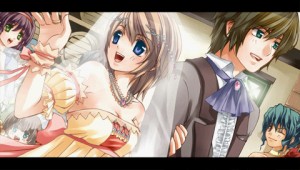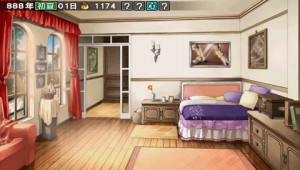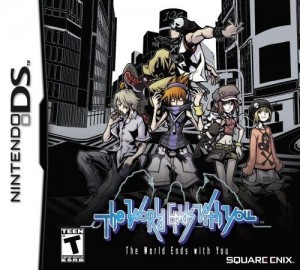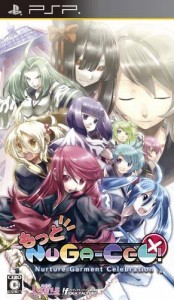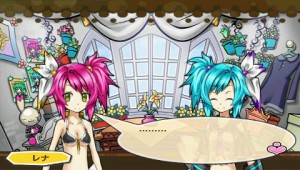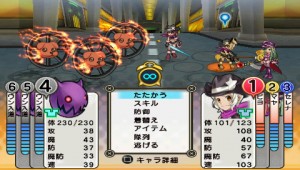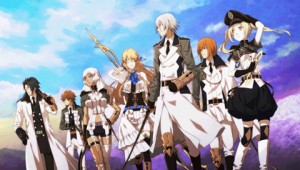 Don’t really know what to say about this one. It was developed by Global A Entertainment, the same guys that brought us My World My Way, which I liked, and Master of the Monster Lair, which I didn’t like. Adventures to Go!
Don’t really know what to say about this one. It was developed by Global A Entertainment, the same guys that brought us My World My Way, which I liked, and Master of the Monster Lair, which I didn’t like. Adventures to Go! falls somewhere between the two, maybe leaning a little more towards the like side. The concept was great and they at least tried to be funny. However half the game was frittered away on very tedious sidequests, so by the time I finally finished it I was bored to tears. If it had been a lot shorter and a little more focused I would have rated it much higher.
The concept: The long and short of it is that ‘Adventures to Go’ is a company that summons various environments and monsters to suit adventurers’ needs. If you need a bug scale from a monster that’s only found in the forest, instead of trudging out to look for one you just order “Forests” and “Bugs” from ATG, go in there and kill bugs till you get one.
What was good
– Bright, colorful graphics. Simple, clean character designs.
– Ordering various kinds of environments in order to get requested items was interesting. It was a huge step up from Master of the Monster Lair because you didn’t have to create a dungeon from scratch.
– Money management was essential. It’s good to play an RPG that forces you to think about your finances while not being as horribly stingy as Dragon Quest games tend to be.
– Greater monster variety. The same bugs and tabbies from the previous games show up, but there are several new enemies and quite a lot of bosses to face. I love a good boss battle.
– The encounter rate was pretty reasonable. It stands out all the more because I’m playing Arms’ Heart at the same time, a game with a truly insane encounter rate. More on that game if/when I finish it.
– The SRPG-like battle system was great. It’s like the system in Stella Deus or Hoshigami Remix where you have a set number of action points (AP) you use to move, heal, fight, etc. You can press square to defend, press X to wait in ambush for enemies, use attacks that sap enemy AP, use all kinds of magic attacks, etc. And random battles take place in the same environment as they occurred in, so if you get caught in a forest you have to maneuver through the trees to get to the enemy, etc. Can be a bit annoying, but it’s usually good fun.
What was not so good
– Let’s face it, Finn is a scumbag. Even if the treasure chests originally belonged to humans, the fact remains that Finn and his cronies are forcefully summoning innocent monsters from their homes, murdering them for money and trophies, and then plundering their homes for cash and treasure. When confronted, his only defense is “Yeah, well, they’re monsters.” That’s not good enough, you greedy capitalist pig-dog. I felt sorry for the poor demons who were just trying to protect their homes and families. ;__;
– The game tried to be cheerful and upbeat, and the characters tried to be likeable, but because of the above-mentioned reason, I couldn’t get into it. I’m an accomplice to genocide! ;__;
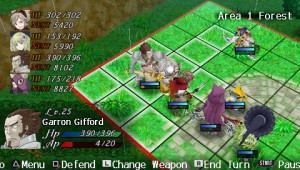 – The game got more and more tedious as the number of dungeon screens increased. Near the end you’ll have to cross 10 different screens to get the one stage you want. And there’s not enough variety in the types of dungeon you could summon. Or more like there was a bit of variety, but all the dungeons felt the same anyway.
– The game got more and more tedious as the number of dungeon screens increased. Near the end you’ll have to cross 10 different screens to get the one stage you want. And there’s not enough variety in the types of dungeon you could summon. Or more like there was a bit of variety, but all the dungeons felt the same anyway.
– Game lacks focus. It just meandered here and there for hours and then suddenly came up with the usual “ZOMG THE WORLD IS IN DANGER” crap. I liked that the chapters moved at a fast pace, but half of them could have been cut out without any great loss to the world.
– Drop rates were stingy. Even if you summon the appropriate dungeon, find and beat the monster in question (sometimes easier than done), there’s no guarantee that it’ll even drop the item you’re looking for. I’m not asking for auto-drops or anything, but a little more consideration would have made the game more fun.
– Not that many quests, and they’re all fetch quests anyway. The quests needed more variety, even if it was just of the “Defeat X monsters and Y bugs” kind.
– The boss battles got too reliant on buffs and debuffs in the last quarter. I think the turning point was the Rock Golem battle, where a few casts of Steel Wall and Temper/Fury are all but compulsory to beat the boss, and most of the others afterwards.
– Once you apply said buffs and debuffs, the battles become easy-mode. Even the final boss barely posed a threat once I had that Steel Wall up and kept using Paralyze to sap his AP. When you have such a fun battle system, it’s a shame to make it so easily breakable. Better too easy than too hard, though.
Etc, etc. In all it was a good experience which just dragged on a bit too long. If only Finn hadn’t been a homicidal *******…
Next up, still have a couple of games to finish, but I don’t think I’m going to finish them so I’ll probably post about something new next time. I’ve been informed that I’m playing Persona all wrong, so I’m going to have to start that all over again. Aarrrrrgghhhh…
